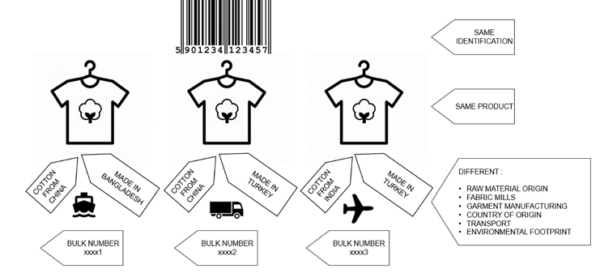Digital Product Passports: Revolutionizing Transparency and Sustainability

In today’s global market, the importance of transparency and sustainability cannot be overstated. The European Union has declared that by 2030, Digital Product Passports will be mandatory for some products sold within its territory.
Digital Product Passports (DPPs) are at the forefront of this revolution, offering a transformative approach to how we track, manage, and recycle packaging materials. These digital passports not only enhance product life cycle management but also foster a more sustainable packaging industry.
You can also read: Packaging Sorting 4.0: Digital Watermarks & Fluorescent Markers
What is a Digital Product Passport?
A Digital Product Passport is an electronic record that accompanies a product throughout its lifecycle. It contains essential data from manufacturing details to disposal instructions, all accessible through technologies like QR codes or NFC chips. This system ensures that every stakeholder, from manufacturer to end consumer, can access real-time information with a simple scan.

Tracking and tracing the complete lifecycle of textile products requires more than simple product identification, such as barcodes, which cannot distinguish between identical products made through different production processes. Courtesy of Digital Product Passport in the textile sector.
Operational Mechanics and Benefits
Digital Product Passports operate by integrating data from various stages of the product’s lifecycle. Manufacturers input initial data, which logistics providers update as the product moves through the supply chain. Consumers can then scan the packaging to understand its origin, components, and recycling instructions. This level of detail not only increases transparency but also empowers consumers to make environmentally conscious decisions.
The primary benefit of DPPs lies in their ability to enhance traceability. By providing a detailed history of the product’s journey, these passports help reduce counterfeiting and improve supply chain integrity. Moreover, they offer invaluable insights into the environmental impact of products, aiding companies in optimizing their sustainability practices.
Success Story: Enhancing Transparency in Textiles
A standout example of Digital Product Passport implementation is seen in the textile industry. Tommy Hilfiger has pioneered the use of this technology, enabling customers to access detailed information about their products. By scanning a QR code on a pair of shoes, customers can trace the entire production chain. They can learn about the origins of the materials, the assembly process, and the suppliers involved at every stage—including finishing, assembly, stitching, and cutting.
Implementation Timeline
Manufacturers need to be aware of important timelines for producing Digital Product Passports for their products. Here’s a brief overview of the scheduled dates and relevant regulations:
Batteries: Development of prototypes is currently underway, with full implementation expected by 2024 under the new EU Battery Regulation.
Electronics: The electronics sector is seeing similar developments, with a target implementation year of 2024, guided by the Ecodesign for Sustainable Products Regulation.
Construction Products: The regulation for construction products was signed in 2022, though the implementation date is still pending. This initiative falls under The Construction Products Regulation (CPR).
Textiles: Prototypes are also in development for textiles, with plans to roll out Digital Product Passports in 2024 as part of the EU Strategy for Sustainable and Circular Textiles. By 2030, every textile product for sale in the European Union will need a digital product passport (DPP).
Challenges and Future Outlook
Despite their benefits, Digital Product Passports face challenges, particularly concerning data security and system integration. Safeguarding sensitive information and ensuring seamless integration with existing IT systems are critical hurdles that industries must overcome.
Looking forward, the evolution of DPP technology promises even greater integration with global sustainability goals. As regulatory frameworks around the world start to emphasize transparency and environmental responsibility, DPP will likely become a staple in the packaging industry.
Further announcements for other product categories are anticipated in 2024, pending the finalization of the Ecodesign of Sustainable Products Regulation.
Digital Product Passports represent a major leap forward in the packaging sector, promising enhanced transparency, improved sustainability, and greater consumer empowerment. As industries increasingly adopt these technologies, the future looks promising for businesses and the environment.
